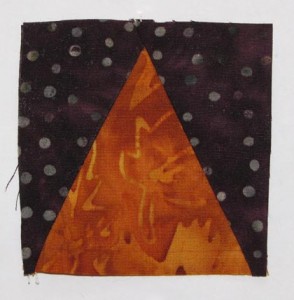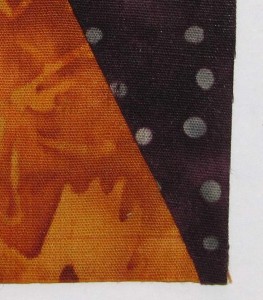While teaching on a cruise in the North East, I met Fawn, a quilter from the North West. We had a great time sharing our stories about quilting and nursing, her profession, and my past hip replacement. Recently, as she was working on a project, she found the blocks weren’t going together, and knew from our conversations that I would have an answer. Here is her problem:
She has made the following blocks: half-square triangle blocks on the right, and Peaky-Spiky blocks (from Doreen Speckman’s terminology, aka Tri-Recs blocks) on the left, that are supposed to match at the top point of the center seam.
To get these points to match, it is important to understand what needs to match. There is one point on the block that has to match a single point on the other block. Both of these points need to fall on the seam that is already in the block. And this point is 1/4″ in from both sides, hopefully. But we are working with fabric, so if needed, we have some adjustments that can be made.
For the half-square triangle block, if the seam doesn’t fall exactly at the corner, then the seam allowances will need to be changed to adjust for it.
For the Peaky-Spiky block, because of the different angle, the seam doesn’t go to the corner, but ends 1/8″ off the corner. If this is not the case, the seam allowance will need to be changed.
 |
 |
As long as you have at least an 1/8” seam allowance or are not taking too much, then getting the points to match on the front is more important to the finished look. So figure what point closest to 1/4″ from both sides but still on the sewn seam is going to be the best match. Then sew just outside of this to have the point show up on the front of the quilt. (This is where scant comes into play. You can view our video on how we mark this on our sewing machines. In a future newsletter I’ll talk about how to use the Corner Cut to mark seam allowances on fabric.)
So with this information Fawn was able to get the blocks joining together better with points aligning. I hope this explanation helps on some of your projects, even if it isn’t exactly this design.
Marci


Leave a Reply
You must be logged in to post a comment.